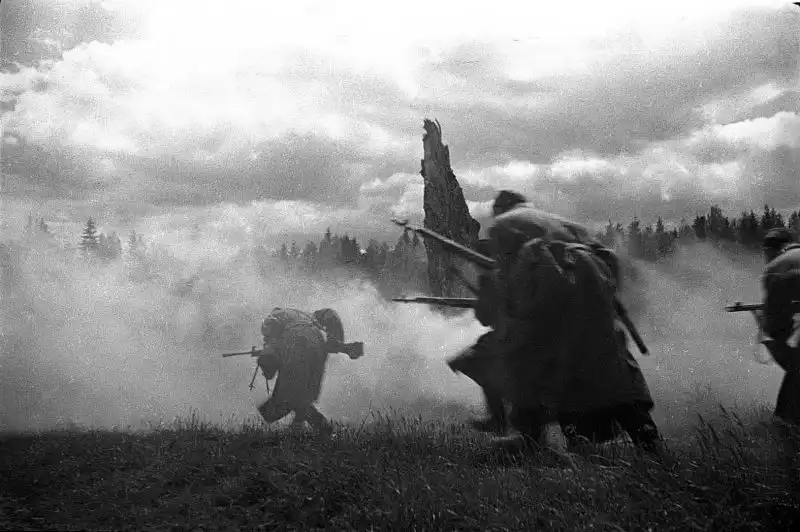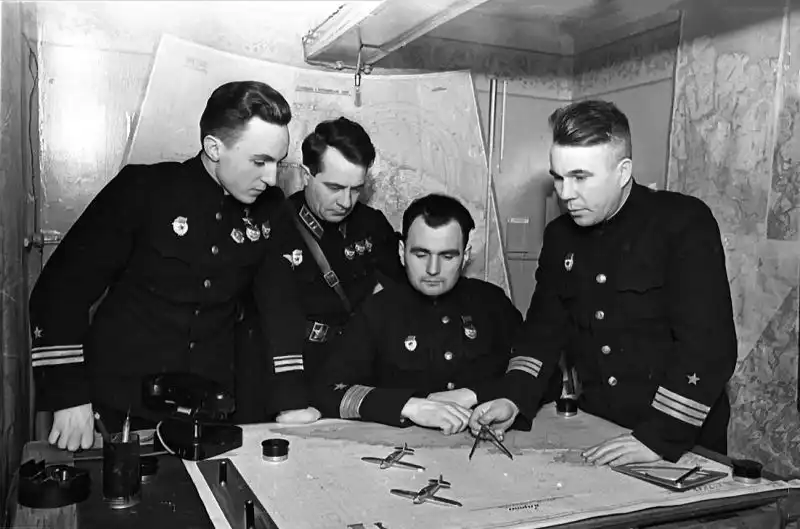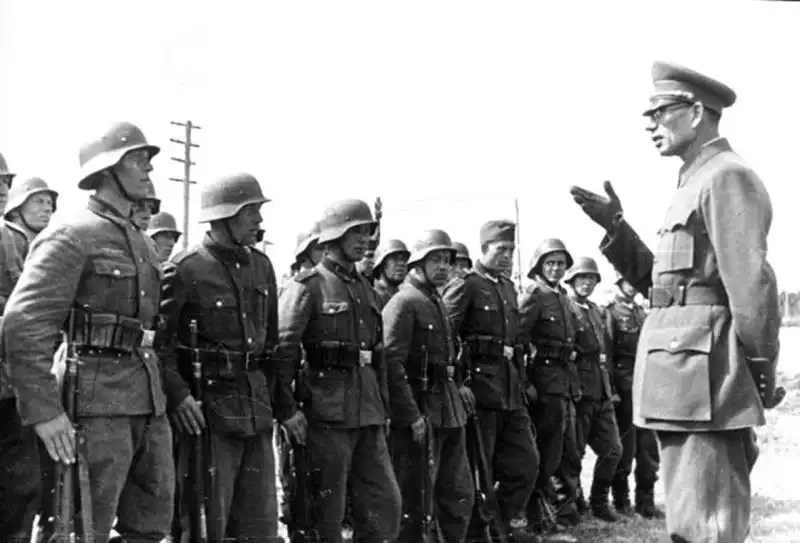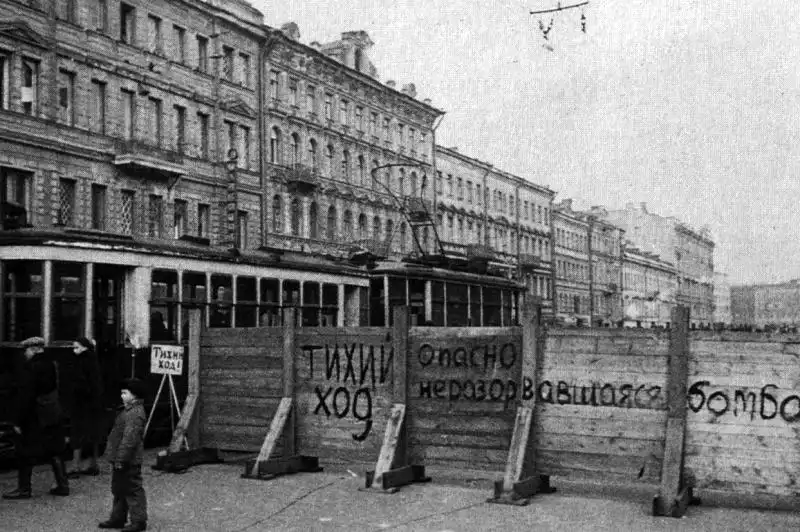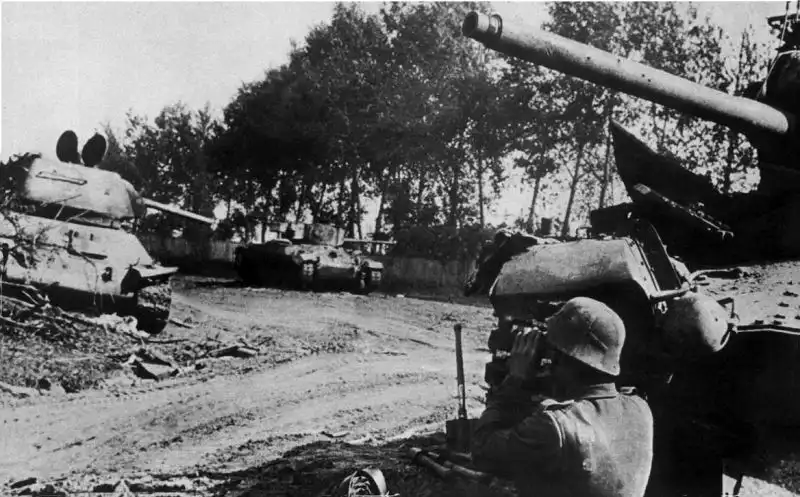Wreckage of a Downed German Junkers Ju 88 Reconnaissance Bomber Near Moscow, 1941
October 17, 2025 - Reading time: 4 minutes
Wreckage of a downed German Junkers Ju 88 reconnaissance bomber inspected by Soviet officers near Moscow, 1941.
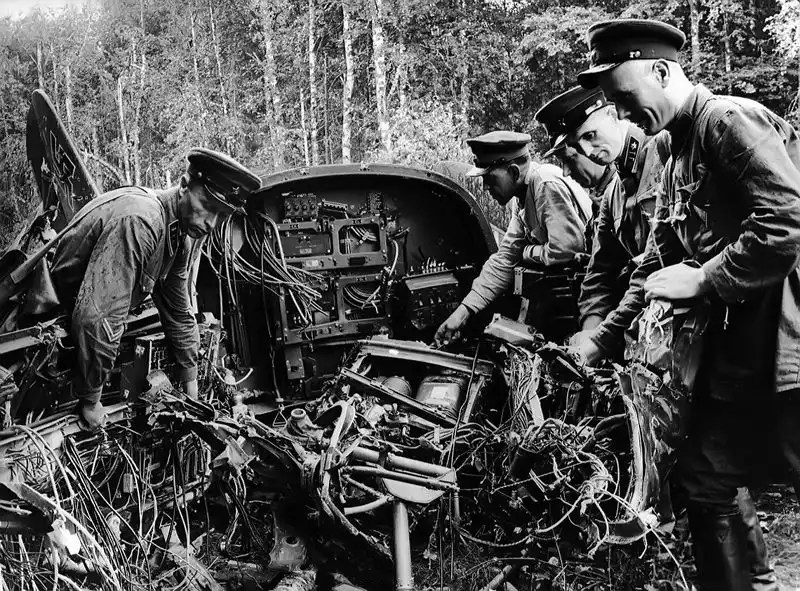
This World War II photograph shows officers of the Soviet Red Army’s signal corps examining the scattered remains of a German Junkers Ju 88 reconnaissance aircraft, shot down near Moscow in 1941. The aircraft crashed in a wooded area, and its twisted wreckage — recognizable by the distinctive twin-engine layout and nose section — bears silent witness to the intense air battles fought in the skies over the Soviet capital during the early stages of Operation Barbarossa.
Based on surviving visual evidence, the aircraft may have been a Ju 88H, B, D, or T variant — long-range reconnaissance or bomber modifications of the standard Ju 88, often equipped with centimeter-wave radar or advanced photographic equipment for intelligence missions deep inside Soviet territory. These specialized aircraft played a crucial role in Luftwaffe operations, mapping air defenses and troop movements, but were increasingly vulnerable to Soviet interceptor patrols and anti-aircraft fire as the front stabilized near Moscow.
The photograph was taken by Margaret Bourke-White, one of the first Western photojournalists to work on the Eastern Front. Her images captured the dramatic contrast between the high-tech weaponry of the German war machine and the resilience of Soviet troops who, by late 1941, had begun to turn the tide of the air war over Moscow.
Technical photo data:
📍 Location: Moscow region, USSR
📅 Date: 1941
📝 Event: Inspection of downed German Ju 88 reconnaissance bomber
📷 Author: Margaret Bourke-White
Category
Search
Categories
- Unidentified WWII Photos (12)
- World War II Photos 1937 (1)
- World War II Photos 1938 (1)
- World War II Photos 1939 (3)
- World War II Photos 1940 (5)
- World War II Photos 1941 (99)
- World War II Photos 1942 (58)
- World War II Photos 1943 (50)
- World War II Photos 1944 (77)
- World War II Photos 1945 (40)
- WWII and Postwar Photos 1946 (1)
